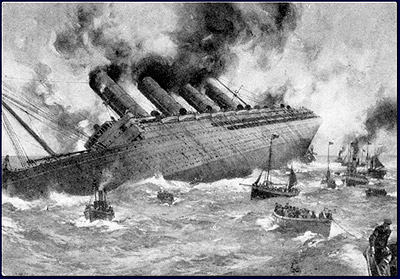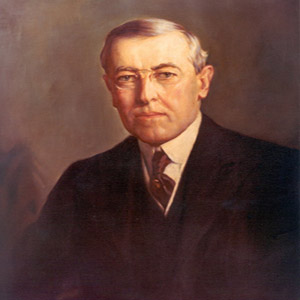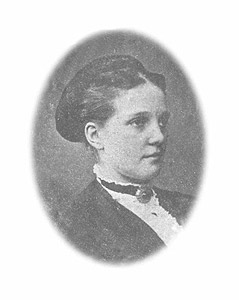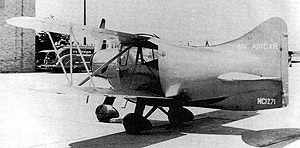
History Essay
From 1910s through 1920s America was seen as an growing society. During this time period other nations had new ideas and methods, from modern art, to new weapons of mass destruction. European nations thought in order to protect themselves they had to form alliances the two alliances were the Central Powers ( Germany, Austria and Turkey) and the Allies ( Britain, France, Russia and the United States). This would ultimately destroy a whole generation of Europe as it lead to WW1, and took years to repair the damage. This war was considered the most deadly war the world had ever seen primarily due to the growth of industry, they were making weapons and ammunition easier and faster. A brand-new invention brought to war -gas bombs. U.S. President Wilson's decision whether or not to go to war was very crucial to both sides of the war. One side saw America's entry as a hope for victory and the other side saw the United States as a fearful enemy. Once the U.S. entered there were people who were against the war and the pacifist movement started. One woman who had strong beliefs in the pacifist movement was Jane Adams. She thought the war could end without going to war.
For war to start it only needed a spark. This one spark was the death of Archduke Ferdinand. Gavrilo Princip murdered him on June 28, 1914. Since both sides had alliances if any one of the nations went to war the other nations supported each other. That brought more conflict and a longer war. The U.S. at first wanted to maintain its "neutrality" during the war. President Wilson remembered what Washington said on his date of leaving the white house to avoid "foreign entanglements". American citizens at first read about the war but were not interested in joining the war. Soon that would change due to the sinking of the Lusitania. It was destined to go from New York to Liverpool, England. Germany had been practicing unrestricted marine warfare and although the Americans did receive a lot of warnings about this, they ignored them. Captain Turner said "Do you think all these people would be booking passage on board the Luistania if they thought she could be caught by a German submarine? Why, it's the best joke I've heard in many days, this talk of torpedoing!" To the surprise of the captain and the U.S. the Germans sank the Luistania killing 124 Americans (originally there were 159 Americans on board) among the total deaths of 1,201. Another reason the U.S. join the war was due to a telegraph the British intercepted called the Zimmermann telegraph. The telegraph stated that if the U.S. joined the war with the allies, then Mexico could go to war with the U.S. and Germany would back them up with money, thus Mexico could recover the land lost to the U.S. Another key factor was since the allies were too busy with the war; they needed money to be borrowed. The allies had a debt of $2 billion dollars to the Americans who favored the allies for economic reasons. President Wilson had promised to keep the U.S. out of war, but now he had to find a way to promote the war. His re-election had campaigned on the slogan of "He kept us out of war!" What he decided to do was to convince the congress that the main reason the U.S. was going to war was because of democracy. The congress agreed and approved of the war.
the Germans sank the Luistania killing 124 Americans (originally there were 159 Americans on board) among the total deaths of 1,201. Another reason the U.S. join the war was due to a telegraph the British intercepted called the Zimmermann telegraph. The telegraph stated that if the U.S. joined the war with the allies, then Mexico could go to war with the U.S. and Germany would back them up with money, thus Mexico could recover the land lost to the U.S. Another key factor was since the allies were too busy with the war; they needed money to be borrowed. The allies had a debt of $2 billion dollars to the Americans who favored the allies for economic reasons. President Wilson had promised to keep the U.S. out of war, but now he had to find a way to promote the war. His re-election had campaigned on the slogan of "He kept us out of war!" What he decided to do was to convince the congress that the main reason the U.S. was going to war was because of democracy. The congress agreed and approved of the war. 
During this time there were pacifist movements going on, where gatherings of women from different types of countries tried to find solutions for the war. Jane Addams, one of the founders the WPP (Women's Peace Party), started in 1915 to hold conferences, and meetings to discuss solutions.  This got many men furious who were mad about the idea that women were the ones dealing with the affairs of the war. Jeanette Rankin was a pacifist in the Congress. When the congress voted for going to war she was the only one who voted against. Another movement that was causing much uproar was the movement of communism. Russia had a revolution and over threw the Czar and became the first communist country in the world. Vladimar Lenin was the first man in charge. Another movement that was going on during this ear was the women's suffrage. Since the beginning of the abolitionist movement women were also interested in their voting rights. Although at that time it seemed a bizarre idea that not many women and men approved of. By the late 1800s and the early 1900s women once again demanded their right to vote. They had conferences, marches, sold cheap pamphlets, and published special newspapers through out the U.S. for this cause. Some of the marches they had attracted many people. One march on March 3, 1913 attracted more people than the inauguration of President Wilson. Women sent many petitions to the congress but were greatly ignored and even the president found no interest in them. As the U.S. entered WW1 women were doing many jobs men did. Women were very valuable during this time as they were nurses, workers, and mothers. Then, Wilson took women rights to vote more seriously, and he proposed for the congress to vote on this subject. The law didn't pass since they were 2 votes short. Despites this, Wilson called for a special vote in the House of Representatives. This time there was enough votes to approve the law to allow women to vote. The final challenge was to get thirty-six states to approve the law to be the 19 th Amendment to the Constitution. Tennessee was the thirty-six state to approve the law. Women were now allowed to vote nation wide.
This got many men furious who were mad about the idea that women were the ones dealing with the affairs of the war. Jeanette Rankin was a pacifist in the Congress. When the congress voted for going to war she was the only one who voted against. Another movement that was causing much uproar was the movement of communism. Russia had a revolution and over threw the Czar and became the first communist country in the world. Vladimar Lenin was the first man in charge. Another movement that was going on during this ear was the women's suffrage. Since the beginning of the abolitionist movement women were also interested in their voting rights. Although at that time it seemed a bizarre idea that not many women and men approved of. By the late 1800s and the early 1900s women once again demanded their right to vote. They had conferences, marches, sold cheap pamphlets, and published special newspapers through out the U.S. for this cause. Some of the marches they had attracted many people. One march on March 3, 1913 attracted more people than the inauguration of President Wilson. Women sent many petitions to the congress but were greatly ignored and even the president found no interest in them. As the U.S. entered WW1 women were doing many jobs men did. Women were very valuable during this time as they were nurses, workers, and mothers. Then, Wilson took women rights to vote more seriously, and he proposed for the congress to vote on this subject. The law didn't pass since they were 2 votes short. Despites this, Wilson called for a special vote in the House of Representatives. This time there was enough votes to approve the law to allow women to vote. The final challenge was to get thirty-six states to approve the law to be the 19 th Amendment to the Constitution. Tennessee was the thirty-six state to approve the law. Women were now allowed to vote nation wide.
This era had to be one of the most bloody and cruel ever known in the world. This war would leave a scar on time, because it was the only war to have been fought in land, ocean, and air.  The amount of deaths were 19,769,102. Nearly everyone in Europe had a family member involved in the war. Due to the excess amount spent on the war a depression followed worldwide. Although a Treaty was designed for the ending of the war (Treaty of Versailles), it was ineffective. Wilson had proposed 14 points but they were unconsidered. It might have resulted in a better solution if they had been considered. Germany had the complete blame in the war, and was obligated to pay the war debt. This cause would soon lead to another event we know as World War 2!
The amount of deaths were 19,769,102. Nearly everyone in Europe had a family member involved in the war. Due to the excess amount spent on the war a depression followed worldwide. Although a Treaty was designed for the ending of the war (Treaty of Versailles), it was ineffective. Wilson had proposed 14 points but they were unconsidered. It might have resulted in a better solution if they had been considered. Germany had the complete blame in the war, and was obligated to pay the war debt. This cause would soon lead to another event we know as World War 2!
Bosco, Peter I. America at War World War 1 Edited by John S. Bowman. New York: Facts On File, Inc. 2003
Sources
http://www.woodrowwilson.org/doc_img/351487.jpg
http://www.fiddlersgreen.net/AC/aircraft/Gwinn-Aircar/Gwinn-Aircar-1.jpg
http://www.burbage-wiltshire.co.uk/FHS/images/ElizaJaneAdams01.jpg
http://www.navy.gc.ca/project_pride/all_images/photo_archive_images/Large/Lusitania-002.jpg
• Brill, Marlene Targ. Let Women Vote! Brookfield: The Millbrook Press, Inc.
1996
• Lunardini, Christine. What Every American Should Know About Women History
Holbrook: Adams Media Corporation 1997
• Rogers, James T. Woodrow Wilson New York: Facts On File, Inc., 1997